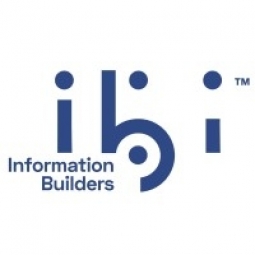Customer Company Size
Large Corporate
Region
- Europe
Country
- Estonia
Product
- WebFOCUS BI and Analytics Platform
- iWay Data Quality Suite
- Data Profiler
Tech Stack
- Sybase data warehouse
- SAP R/3 enterprise resource planning (ERP) system
Implementation Scale
- Enterprise-wide Deployment
Impact Metrics
- Productivity Improvements
- Customer Satisfaction
Technology Category
- Analytics & Modeling - Real Time Analytics
Applicable Industries
- National Security & Defense
Applicable Functions
- Logistics & Transportation
- Quality Assurance
Use Cases
- Predictive Maintenance
- Real-Time Location System (RTLS)
Services
- Data Science Services
- System Integration
About The Customer
The Police and Border Guard Board (PBGB) is the law enforcement agency of the Republic of Estonia, a country of 1.3 million citizens in the Baltic region of Northern Europe. The board is under the supervision of the Ministry of the Interior, which supervises the PBGB, the Estonian Internal Security Service, the Rescue Service, the Emergency Response Centre, the IT and Development Centre of the Ministry of the Interior and the Academy of Security Sciences. With a grant from the European Union, PBGB set out to improve its analytic capabilities. Analysts envisioned a new data warehouse, an agency-wide reporting portal, and a predictive policing system that could help officers make decisions based on their analysis of recent crime trends.
The Challenge
The Police and Border Guard Board (PBGB) of Estonia faced a challenge as their data warehouse grew to contain information on 150,000 misdemeanors and more than 30,000 criminal offences. The analysts were tasked with automating data quality procedures. The team wanted to minimize the accrual of inaccurate data so that police reports and procedures would be consistent and correct. Bad data can impact each level of the organization and lead to inaccurate decisions regarding how resources are allocated, public order is maintained, and police procedures are conducted. For example, an incorrect date or time field can lead to an inaccurate evaluation of work performance.
The Solution
PBGB purchased Information Builders’ WebFOCUS business intelligence (BI) and analytics platform and the iWay Data Quality Suite to automate data quality and data profiling activities. iWay Data Quality tools allow the department to set up business rules to monitor and maintain data quality, now and in the future. iWay Data Quality Server is invoked during an iWay DataMigrator process to generate a log of executions. This log is used for internal reporting and communication. When problems are detected during the processing, iWay sends a list of anomalies for remediation. PBGB continues to use these iWay tools on a day-to-day basis as new information is loaded into the warehouse. The bureau uses iWay Data Quality Suite in conjunction with WebFOCUS to conduct data quality audits. WebFOCUS plays a role in the department’s data quality initiative by generating reports that summarize errors and anomalies in the source systems.
Operational Impact
Quantitative Benefit

Case Study missing?
Start adding your own!
Register with your work email and create a new case study profile for your business.
Related Case Studies.

Case Study
Data Capture for Afghanistan Forces
Electronic equipments on the field of Afghanistan provided information on the status of the vehicle and to identify potential threats surrounding it to the British Force. The monitoring and interpretation of this data requires robust and sophisticated digitization for data capture and communication.
Case Study
Enhancing Security and Compliance in Remitly's Global Money Transfer Service with Fastly
Remitly, an online remittance service, was faced with the challenge of securing its proprietary global transfer network. The company needed a security solution that could meet PCI requirements and protect customers' sensitive transactions through its mobile application. The solution had to be capable of defending against new and emerging attack types without impacting performance. Remitly also had to deal with irregular traffic patterns, such as a sudden spike in account transfers from a small network segment on the Pacific coastline of South America. The company needed to determine in real time whether such traffic indicated an attack or valid requests. A traditional web application firewall (WAF) would not be able to distinguish this traffic, potentially leading to customer frustration if the IP was blacklisted.

Case Study
Major Aerospace Company Automates Asset Management
The O&M division of an aerospace and global security company was using spreadsheets to manually track more than 3,000 assets assigned to students and staff. Maintaining audit trails for this high volume of equipment became increasingly time-consuming and challenging. The chore involved knowing precisely what equipment was on hand, what had been issued, its location and the name of the custodial owner of each item. Every aspect of this task was carried owner of each item. Every aspect of this task was carried out by individuals with spreadsheets. Manually documenting the full lifecycle of each asset added to the burden. This included tracking maintenance requirements and records, incidents and damages, repairs, calibrations, depreciation, and end-of-life data.

Case Study
Securing a Large Data Center in the EMEA Region: An IoT Case Study
A leading data-center operator in the EMEA region, with multiple facilities spanning over 25,000 square meters, faced significant security challenges. The operator experienced interruptions in their internal IT network due to unsupervised work of third-party technicians. Despite having a high-end building control system that provided 24x7 monitoring and control to all the building’s infrastructure, the data center was vulnerable from a cyber perspective as it was connected to the IT network infrastructure. The operator launched an urgent OT cyber security project that included both IT-OT network segmentation and OT network asset mapping and anomaly detection. The main objectives were to harden the security of the server systems, secure the facility’s power supply and server cooling system, strengthen the segmentation between building and operational systems, create a visual OT network map, and set up a system for presenting supply-chain attacks that may threaten the data center through equipment vendors’ maintenance activities.

Case Study
Leveraging Graph Technology for Enhanced Cybersecurity: A Case Study on MITRE's CyGraph
MITRE, a federally-funded, not-for-profit company that manages seven national research and development laboratories in the United States, was grappling with the challenge of managing an influx of cybersecurity data. The constant changes in network environments were impacting the security posture of U.S. government agencies. Intrusion alerts, anti-virus warnings, and seemingly benign events like logins, service connections, and file share access were all potentially associated with adversary activity. The cybersecurity researchers at MITRE needed to go beyond rudimentary assessments of security posture and attack response. This required merging isolated data into higher-level knowledge of network-wide attack vulnerabilities and mission readiness. The challenge was not the lack of information, but the ability to assemble disparate pieces of information into an overall analytic picture for situational awareness, optimal courses of action, and maintaining mission readiness. The team also struggled with fully comprehending a given security environment and mapping all known vulnerabilities.

Case Study
Enhancing Security Precision with IoT: A Case Study of Guardsman Group
Guardsman Group, a leading security company in the Caribbean, faced a significant challenge in maintaining the security of its digital infrastructure. The company provides security equipment, personnel, and systems for various businesses across the region. However, one of its offices experienced a security incident that affected all communications at that location. The existing security tools were not sufficient to provide the necessary protection, and it took hours to identify the source of the issue. This incident highlighted the need for a dynamic solution that could proactively identify threats. The company's primary concern was any disruption to its business, as it manages a significant portion of Jamaica's money and cannot afford for its operations to go down.







